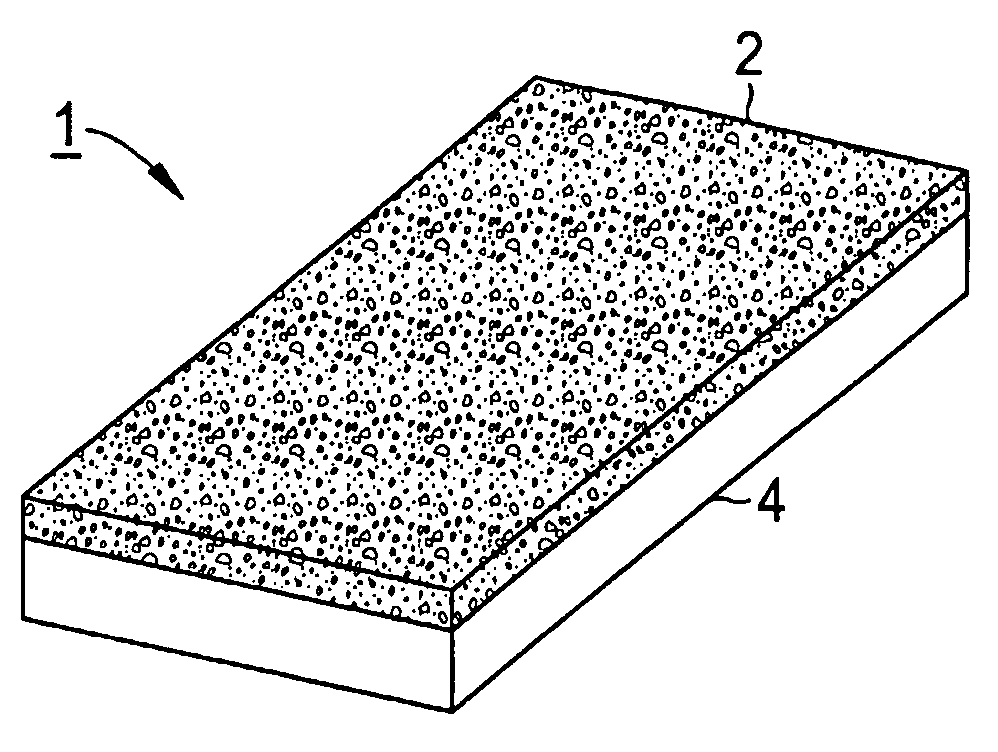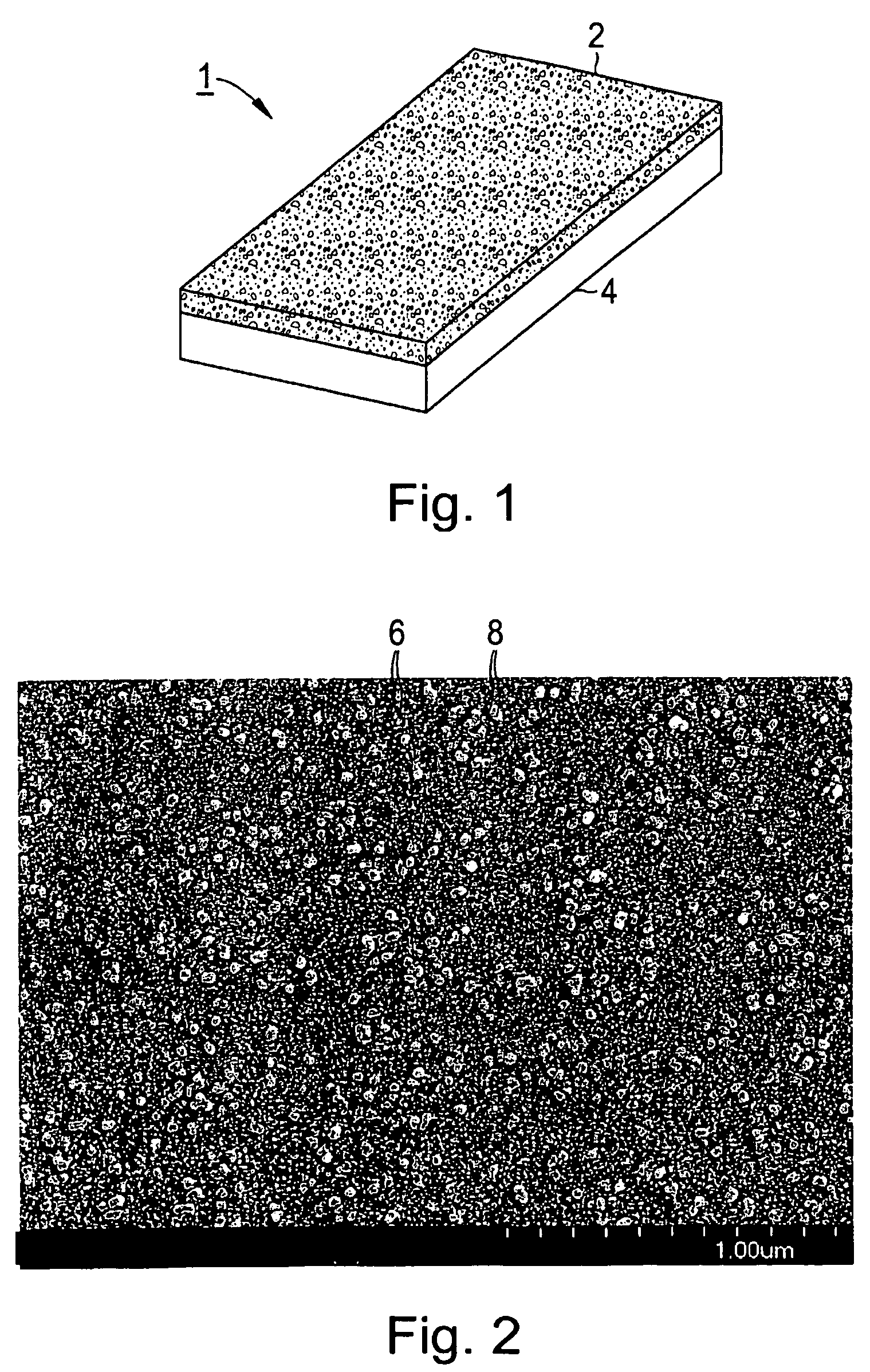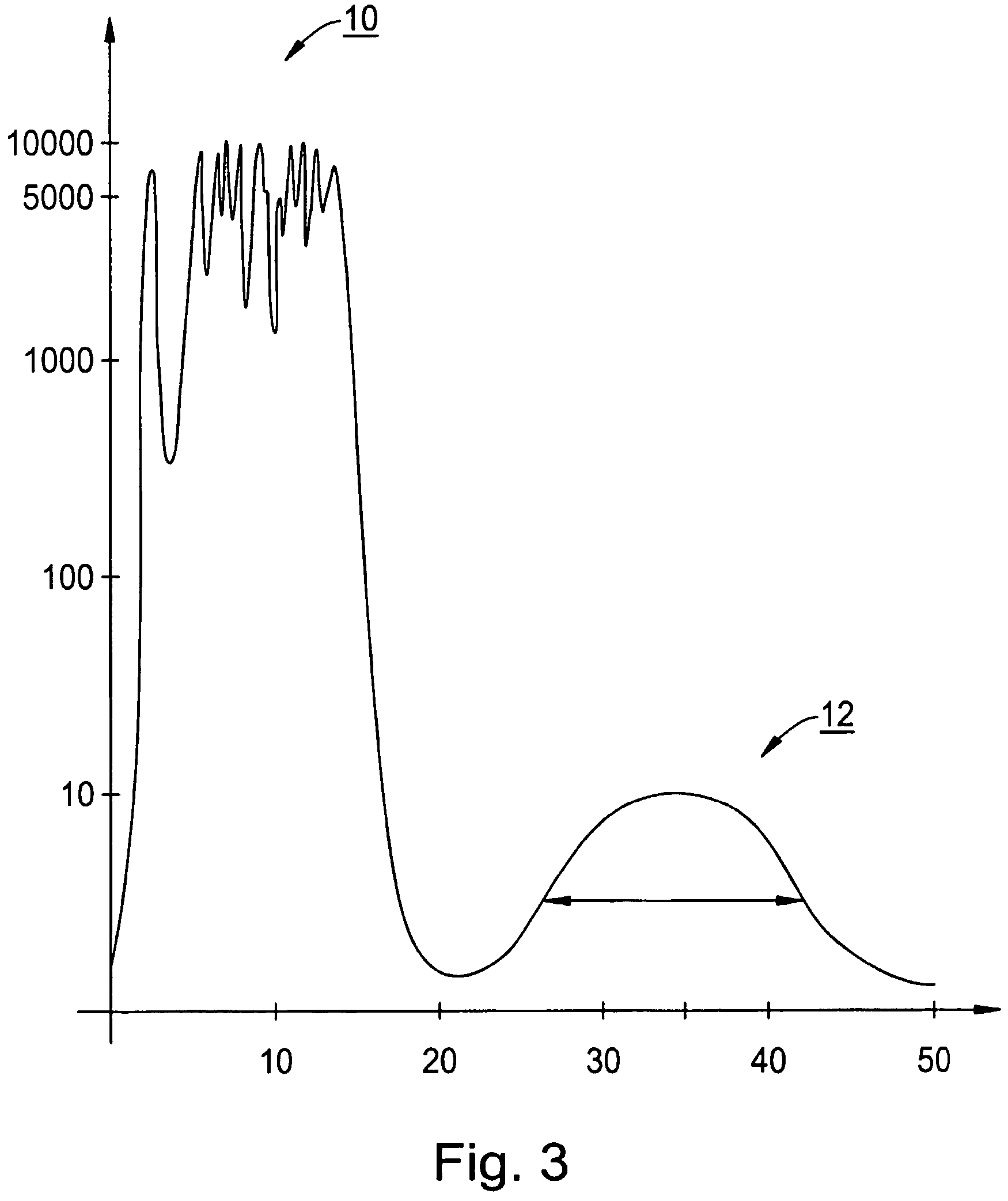Glass having a porous anti-reflection surface coating and method for producing such glass
a technology of anti-reflection surface coating and glass, which is applied in the direction of coating, solar heat radiation prevention, solar radiation transmission and prevention, etc., can solve the problems that none of the above-mentioned anti-reflection surface coatings fully meet, and achieve high abrasion resistance, favorable mechanical properties, and high optical properties.
- Summary
- Abstract
- Description
- Claims
- Application Information
AI Technical Summary
Benefits of technology
Problems solved by technology
Method used
Image
Examples
example 1
[0070]29.4 grams of an aqueous 0.08 n ammonium hydroxide solution are completely mixed with 380 grams of ethanol and 50.7 grams of tetramethoxysilane are added while being stirred. After a stirring time of 150 minutes, 400 grams of a 5%-monodispersed silicon oxide-hydroxide sol containing silicon oxide-hydroxide particles with a mean particle size of 25 nm are added and stirred for another 60 minutes until 970 grams of 1,2-propylene glycol monomethyl ether are added to the batch. The hybrid sol thus produced is subsequently filtered through a fiberglass prefilter.
example 2
[0071]25.4 grams of polyethylene glycol having a mean molecular weight of 200 g / mol are dissolved in a mixture consisting of 29.4 grams of 0.08 n aqueous ammonium hydroxide and 357 grams of ethanol. Then 50.8 grams of tetramethoxysilane are added to this solution while being stirred. After a stirring time of 125 minutes, 400 grams of a 5%-monodispersed silicon oxide-hydroxide sol containing silicon oxide-hydroxide particles with a mean particle size of 25 nm are added and stirred for another 30 minutes until 1300 grams of 1,2-propylene glycol monomethyl ether are added to the batch. The hybrid sol thus produced is subsequently filtered through a fiberglass prefilter.
[0072]The hybrid sol thus obtained is applied onto the glass substrate 4 in order to produce the glass 1. For this purpose, the hybrid sol can be present in a coating solution into which the glass substrate 4 is dipped. Instead of such dip-coating, however, it is also possible to employ a spraying method or a rotary coat...
PUM
| Property | Measurement | Unit |
|---|---|---|
| particle size | aaaaa | aaaaa |
| particle size | aaaaa | aaaaa |
| refractive index | aaaaa | aaaaa |
Abstract
Description
Claims
Application Information
 Login to View More
Login to View More - R&D
- Intellectual Property
- Life Sciences
- Materials
- Tech Scout
- Unparalleled Data Quality
- Higher Quality Content
- 60% Fewer Hallucinations
Browse by: Latest US Patents, China's latest patents, Technical Efficacy Thesaurus, Application Domain, Technology Topic, Popular Technical Reports.
© 2025 PatSnap. All rights reserved.Legal|Privacy policy|Modern Slavery Act Transparency Statement|Sitemap|About US| Contact US: help@patsnap.com



